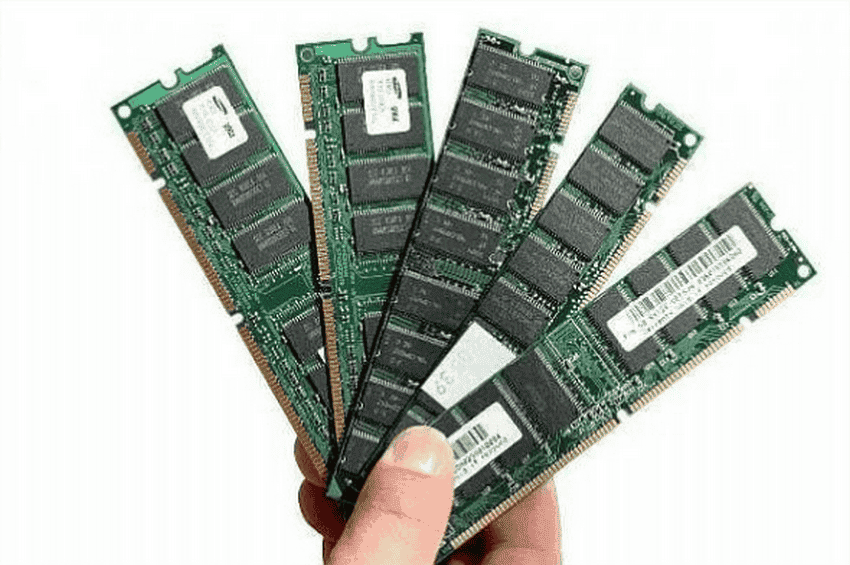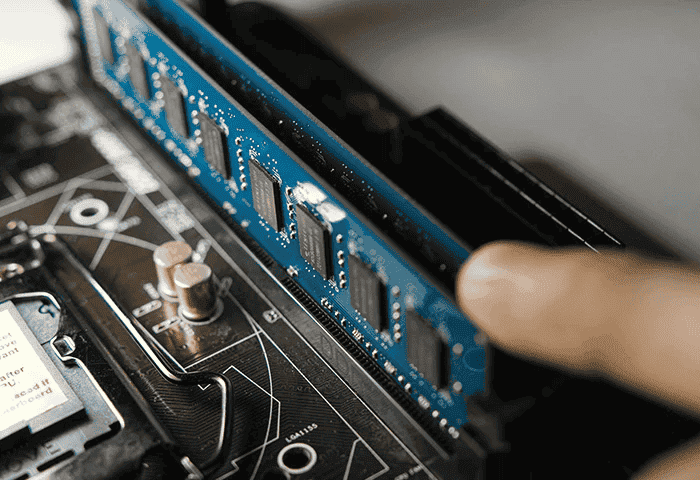Knowing if your RAM is adequate depends on your ability to check its current capacity. Fortunately, this process is straightforward and quick, allowing you to decide whether to upgrade your memory or if your existing RAM suffices.
If you’re a power user, you certainly know the amount of RAM your PC currently has. However, if you’re a casual or moderate user, or have a second-hand PC without a deep specs sheet, this guide may be useful to learn the exact amount of RAM your PC has. If you’re a gamer or work constantly with multiple software, the more, the merrier. So it’s important to know the capacity of your PC and know if you need an upgrade to improve your workflow. (Via: DigitalTrends)
What is RAM Memory?
Random Access Memory (RAM) is a crucial component of a computer’s hardware that serves as temporary storage for data and instructions that the CPU (Central Processing Unit) needs to access quickly. Unlike storage devices such as hard drives or SSDs, which retain data even when the computer is powered off, RAM is volatile memory, meaning its contents are erased when the computer shuts down.
RAM plays a fundamental role in the performance of a computer system by providing fast access to frequently used data and programs. When you open an application or file, the operating system loads it into RAM, allowing the CPU to access the data much more quickly than if it had to retrieve it from a storage device. This results in faster overall system responsiveness and smoother multitasking.
The amount of RAM installed in a computer directly impacts its ability to handle multiple tasks simultaneously and efficiently. Insufficient RAM can lead to performance bottlenecks, causing programs to run slowly or even crash when the system runs out of memory.

In addition to capacity, the speed and type of RAM also influence system performance. Faster RAM speeds and newer technologies, such as DDR4 or DDR5, can improve overall system responsiveness and support more demanding applications and workloads.
Overall, RAM is a critical component in modern computing systems, enabling fast and efficient data access for a wide range of tasks, from basic web browsing to complex video editing and gaming. For that reason, it’s a vital component and you need to know more about it. Through this guide, you will learn exactly how to check it on a Windows PC or a Mac.

How to Check RAM Amount in Windows 10 and Windows 11
Although Windows 10 and Windows 11 are different versions, they still share similar settings. Despite the different visuals, the steps are the same to check the amount of RAM on your Windows 10/11 PC.
- Step 1: Open the Settings App. The easiest way is to right-click on the Windows icon and select Settings.
- Step 2: In the Settings app, click on “System,” then scroll down and select “About.”
- Step 3: Look for your installed RAM under “Device Specifications.”
How to Check Your RAM in Mac
In MacOS, it’s easy to check how much RAM you have.
- Step 1: Simply click on the Apple menu and choose “About This Mac.”
- Step 2: Once you’ve opened “About This Mac,” you’ll see the Overview tab selected by default. Look for the amount of installed RAM next to “Memory.”
ChromeOS
To check how much RAM you have in Chrome OS, follow these steps:
- Step 1: Open the Chrome browser and type “chrome://system” in the search bar. Then press Enter.
- Step 2: Scroll down to find “meminfo” in the list of information. Then, click on the “Expand” button next to it.
- Step 3: Look for the amount of RAM in your PC listed next to “MemTotal,” measured in kilobytes (kB). To convert it to gigabytes (GB), divide by 1,048,576. Then, round up to get the installed RAM amount. For instance, if it shows 16248736kB, dividing by 1,048,576 gives 15.59GB. Round that up to 16GB, which matches the known installed RAM in the laptop.
Ubuntu
To check the amount of RAM in Ubuntu, follow these steps:
- Open Terminal: You can do this by pressing
Ctrl + Alt + Ton your keyboard or by searching for “Terminal” in the applications menu. - Run the Command: In the Terminal window, type the following command and press Enter:
free -h - View the Output: The command will display information about your system’s memory usage, including the total amount of RAM installed. Look for the line labeled “Mem” or “total” to see the total amount of RAM in your system, expressed in gigabytes (GB).
That’s it! You’ve now checked the RAM capacity in your Ubuntu system.

Reasons to Upgrade your RAM
Now that you successfully checked the RAM amount on your system, it’s time to evaluate if you’re good for your usage or need to upgrade to improve performance and workflow. Some of the reasons for increasing your RAM capacity include:
- Improved Performance: Upgrading RAM can significantly improve your system’s performance. If you frequently run multiple programs or demanding applications simultaneously. With more RAM, your computer can handle tasks more efficiently, reducing slowdowns and improving overall responsiveness.
- Enhanced Multitasking: If you find yourself frequently switching between applications or running multiple browser tabs simultaneously, upgrading RAM can provide a smoother multitasking experience. Additional RAM allows you to run more programs concurrently without experiencing performance degradation.
- Better Gaming Experience: Many modern games require a significant amount of RAM to run smoothly. Upgrading your RAM can improve gaming performance by reducing loading times, minimizing stuttering or lag, and allowing for higher graphics settings.
- Faster Data Processing: RAM plays a crucial role in data processing and temporary storage. With more RAM, your computer can process large datasets more quickly. It leads to faster data analysis, rendering, and other computational tasks.
- Future-Proofing: As software and operating systems become more resource-intensive over time, having ample RAM ensures that your system remains capable of handling new software updates and applications without performance bottlenecks. Upgrading RAM can prolong the lifespan of your computer and delay the need for a full system upgrade.
- Optimized Virtualization: If you use virtualization software to run multiple operating systems or virtual machines simultaneously, upgrading RAM is essential. Additional RAM allows for smoother virtual machine performance and enables you to allocate more resources to each virtual environment.
- Improved Web Browsing Experience: Modern web browsers and websites can be memory-intensive, especially when running multiple tabs or accessing media-rich content. Upgrading RAM can improve your web browsing experience by reducing page loading times and preventing browser crashes due to memory exhaustion.

Check the Max RAM Capacity Supported by your Device
It is worth noting, that you need to check the RAM capacity supported by your device. Before going forward to upgrade, you need to make sure your device offers support for more. The Maximum RAM can relate to a physical maximum, such as only having a certain number of slots to install RAM. In other cases, it is also related to the design of the product. Apple’s latest MacBooks, have unified memory on the CPU, so the RAM capacity you get is the one that came with it. Also, some laptops come with fixed modules of RAM and a single slot for conventional RAM. Therefore, it’s only possible to add a single RAM stick.
Look on your manufacturer’s website or in the manual to find out how much RAM your device can take.





